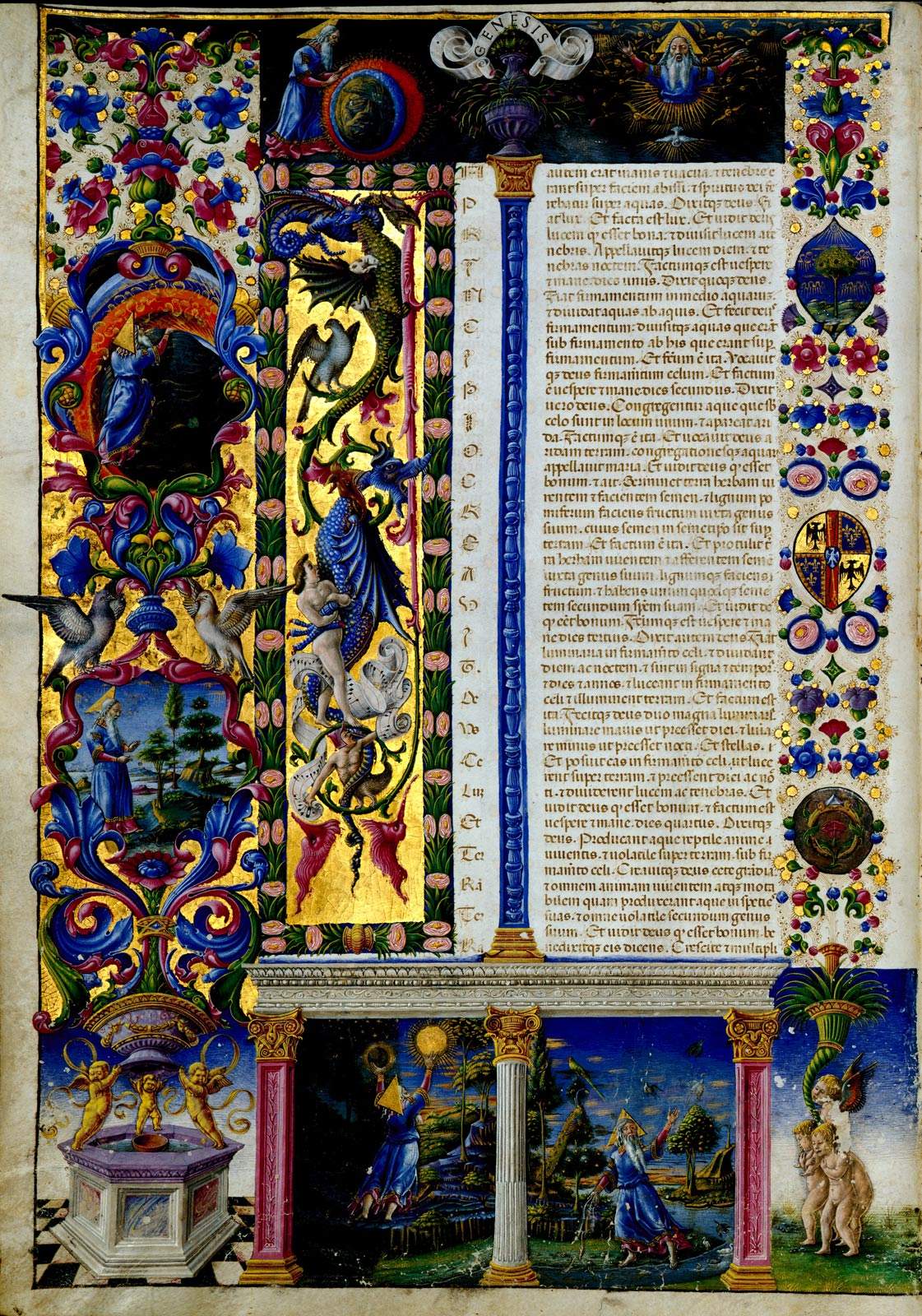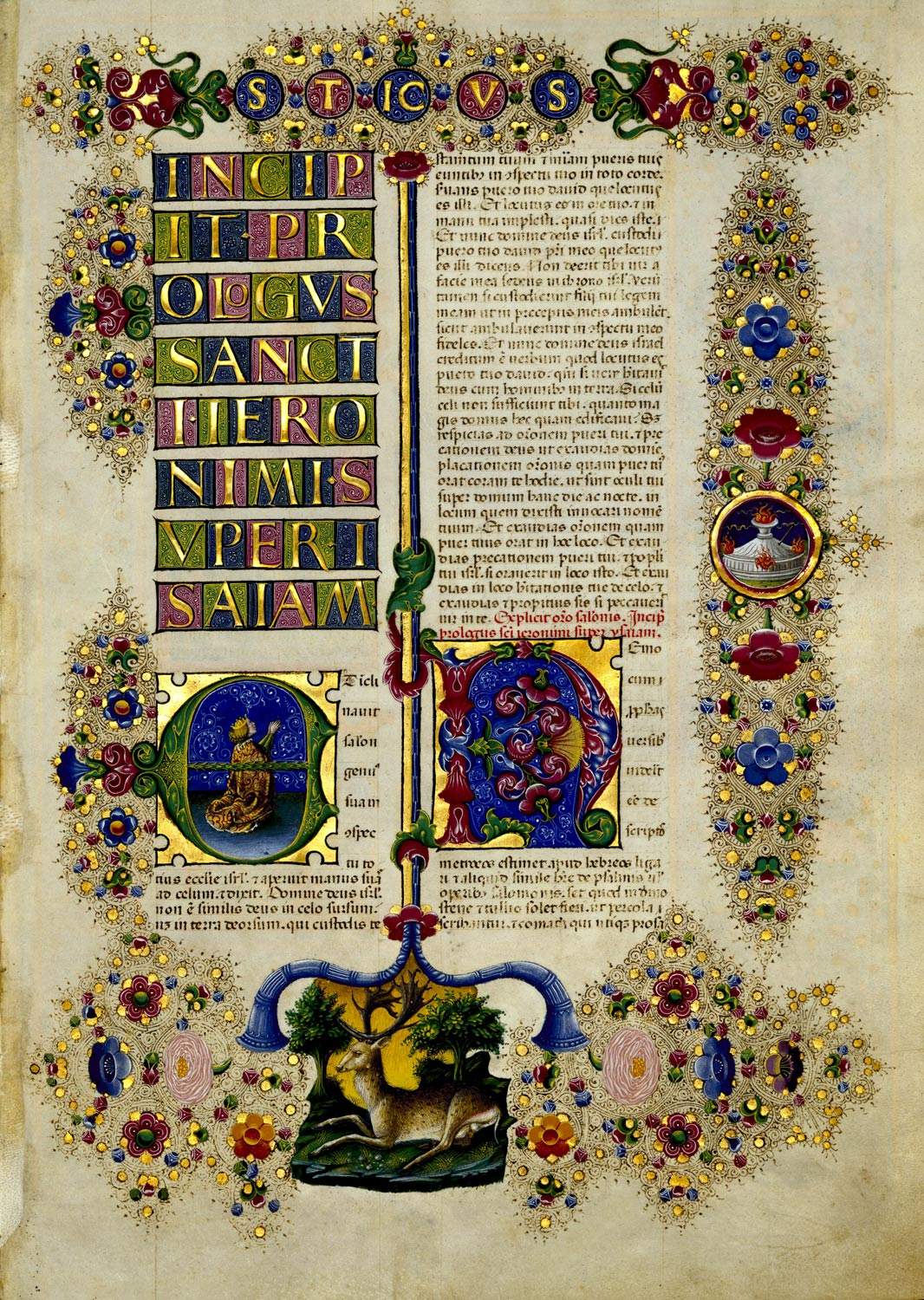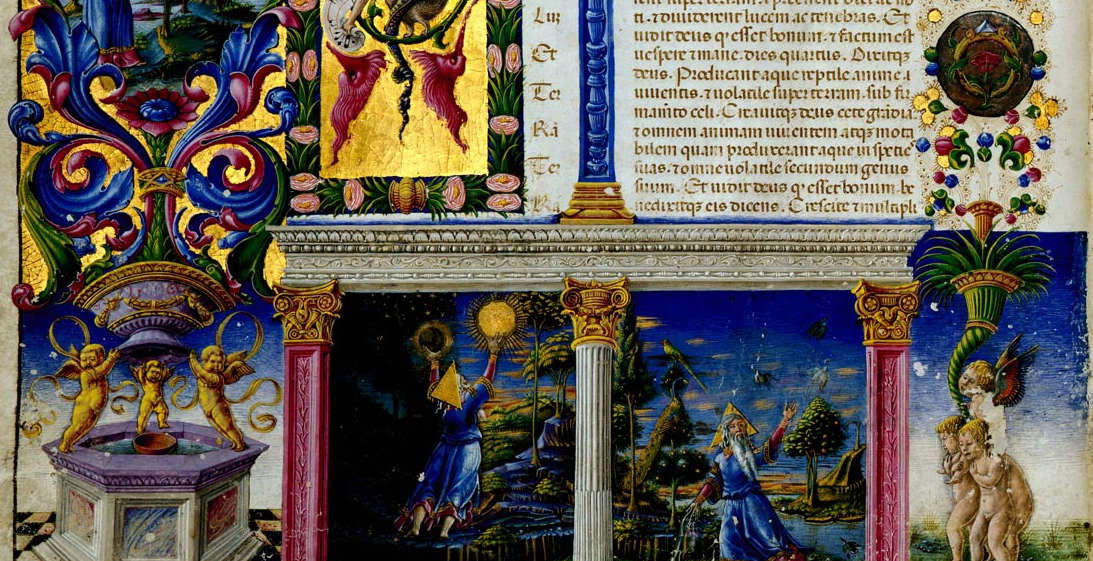One of the greatest masterpieces of Italian Renaissance art is returning to Rome after more than a century. On the occasion of the Jubilee of 2025, in fact, the famous Bible of Borso d’Este(here is a detailed in-depth discussion) will be on display in the Senate Library, Palazzo della Minerva, from November 14, 2025 to January 16, 2026, as part of the exhibition entitled Et Vidit Deus Quod Esset Bonum - The Bible of Borso d’Este. A Masterpiece for the Jubilee. The exhibition is promoted by the Senate of the Republic in collaboration with the Presidency of the Council of Ministers, the Ministry of Culture, the Estensi Galleries, the Extraordinary Commissioner for the Jubilee and the Istituto dell’Enciclopedia Treccani.
The initiative represents a celebration of the country’s artistic and spiritual heritage, since it brings back to the capital a work that, due to its value and history, is a symbol of the Italian cultural renaissance of the 15th century and of Este patronage. The Borso d’Este Bible was made between 1455 and 1461 at the behest of Duke Borso d’Este, lord of Ferrara, Modena and Reggio. It was executed by calligrapher Pietro Paolo Marone and by a team of illuminators led by Taddeo Crivelli and Franco dei Russi, artists of extraordinary talent who created one of the finest examples of the art of Renaissance illumination. The manuscript, consisting of two volumes of finely decorated parchment, combines the sacred value of the biblical text with the magnificence of its illustrations, which reveal the technical mastery and symbolic intensity of the Ferrara school.


Each page is a masterpiece in itself: the miniatures, adorned by frames with plant motifs, allegorical figures and narrative scenes, dialogue with the sacred text in a perfect balance between devotion and beauty. In the panels one can recognize echoes of the art of Pisanello, Donatello, Mantegna, and Piero della Francesca, but also, and above all, the influence of the leading Ferrarese painters of the time, such as Cosmè Tura, Michele Pannonio, and Francesco del Cossa, who helped define the artistic language of the Po Valley Renaissance.
Preserved today at the Biblioteca Estense Universitaria in Modena, the Borso d’Este Bible is exhibited only on very rare occasions, due to its fragility and the priceless value of the artifact. The Roman event, which coincides with the centenary of its first public presentation in the city of Modena, will therefore offer the public a rare opportunity to admire up close a work that is at once a document of faith, historical testimony and the summa of Italian decorative art.
The return of the manuscript to the Palazzo della Minerva also takes on a highly symbolic significance. It was in fact in this very place that, in 1923, the patron and entrepreneur Giovanni Treccani decided to purchase the Bible of Borso d’Este, saving it from dispersion. The decisive meeting took place with philosopher and Minister of Education Giovanni Gentile, who convinced Treccani to take charge of the purchase in order to return the work to the heritage of the Italian state. The donation was formalized at Palazzo della Minerva itself, with a deed signed on November 3, 1923, co-signed by Gentile and Treccani. Since then, the Bible has become an integral part of the Estense Library’s collection, a symbol of one of the most significant gestures of civic and cultural patronage of the 20th century.
The Roman exhibition therefore celebrates not only the beauty of the manuscript, but also the story of its rediscovery and its return to the community. The initiative evokes a deep connection between culture and institutions, underscoring the role that knowledge and protection of artistic heritage have had and continue to have in the construction of national identity.
The title of the exhibition, “Et Vidit Deus Quod Esset Bonum” (“And God saw that it was a good thing”), quotes the passage from Genesis that marks the days of Creation, alluding to the perfection and harmony of the world willed by God. A reference that reflects the work’s humanistic vision and its ability to unite spirituality and art, faith and beauty, in a balance that characterizes the entire Renaissance season.
During the opening period, the exhibition will be open from Monday to Friday, from 10 a.m. to 6 p.m., with free admission, so as to allow as many people as possible to access a heritage that is normally inaccessible.
The Borso d’Este Bible is considered one of the highest testimonies of book art of all time. Its value lies not only in its extraordinary material workmanship, but also in its symbolic function: it represents the culmination of an era in which noble and religious patrons invested in art as a form of devotion and cultural affirmation. The work of the illuminators and the calligrapher expresses an ideal of beauty that is both intellectual and spiritual, a universal language that has spanned the centuries and still inspires wonder and admiration today.
 |
| Borso d'Este's Bible returns to Rome for Jubilee, at Palazzo della Minerva |
Warning: the translation into English of the original Italian article was created using automatic tools. We undertake to review all articles, but we do not guarantee the total absence of inaccuracies in the translation due to the program. You can find the original by clicking on the ITA button. If you find any mistake,please contact us.